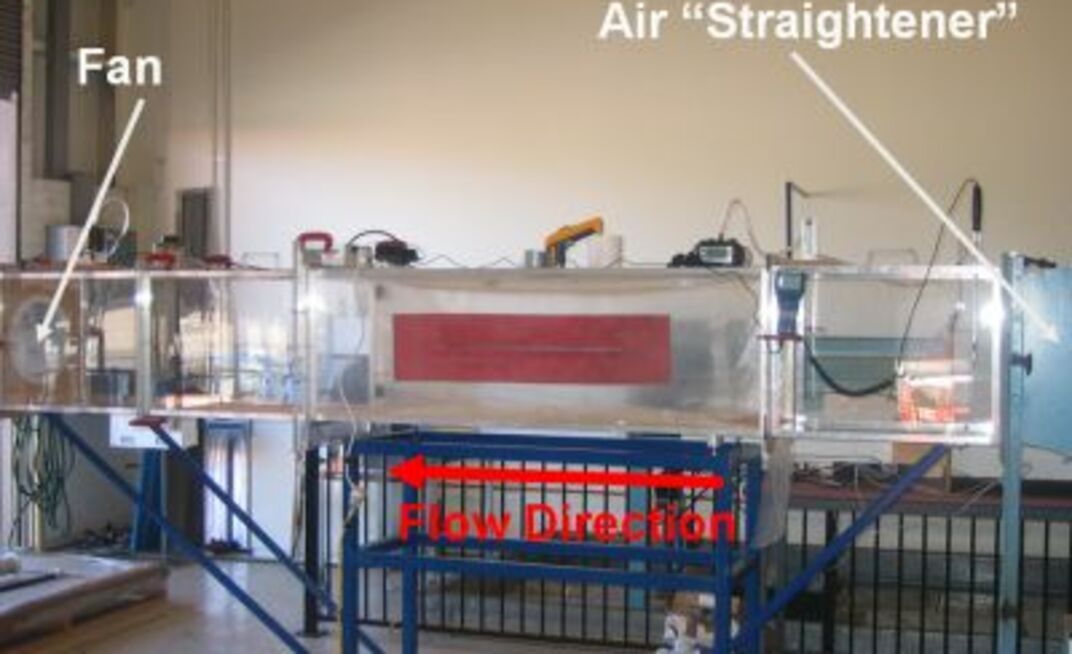University of Wollongong’s Chris Lukey, Ernest Baafi, Jan Nemcik and Ian Porter have been working on “ToughSkin” for the past few years in an effort to provide the underground coal industry with an alternative to steel mesh.
In developing the skin, the team aims to create a product that is equivalent to or superior to the confinement capabilities of steel mesh; requires minimal human intervention in installation and worker exposure to the face; is cost-effective and safe; and allows industry to achieve higher roadway development rates.
Since March the team has been testing various components of the skin in an effort to perfect its make-up and ensure it meets underground regulations.
Shelf life, temperature, fibre make-up, flame retardants, application and adhesion have all been tested.
Senior researcher Chris Lukey told International Longwall News the polymer had been reformulated to create a long shelf life after some initial issues.
The surface temperature of the material was tested as it cured to ensure it did not exceed 150C.
“We discovered that when we spray the polymer on a material that acts as a heatsink [such as coal] we measured a very small exotherm of only a few degrees,” Lukey said.
Testing was also conducted to compare reinforcements, including short and long glass fibre and short carbon fibre.
“We needed to know the effect of different fibre lengths and materials on the mechanical properties, as there is a limit to the length of fibre that can be effectively sprayed with the polymer. Our goal is to use pre-chopped fibres rather than using a chopper at the spray head because this generates silica dust, which is a health hazard and is also difficult to control,” he said.
“The longer glass fibres give a greater amount of strength enhancement than the shorter fibres but the shorter fibres are far easier to work with, so there is a trade-off between effectiveness and sprayability.”
The team is working to determine an optimum fibre length that gives sufficient reinforcement but can still be sprayed.
The researchers also looked at alternative flame retardants, with limited success.
“Experiments to date have been with different forms of flame-retardant additives with similar chemical structure. The materials we have so far tested have not passed the requirements of NSW DPI, and we now plan to investigate a number of flame retardants of different chemical types with the goal of identifying the optimum material,” Lukey said.
Wind tunnel experiments were used to determine the airborne concentrations of starting materials during spray, and during and after cure.
“We found that the concentration of one of the components was many times the allowable concentration during spray. This dropped to a much lower concentration after spray but before full cure, and dropped further to below the critical concentration after cure.
“The results will be used to determine how we handle the fumes generated by the application and cure process. We do know, however, that once full cure is achieved, it is okay for personnel to be in the vicinity of freshly installed ToughSkin.”
The team is also working on a feed system for spraying and is exploring a number of conceptual designs.
One option is to deliver the ready-chopped fibre reinforcement via a rotary feeder with air assistance. It comes into contact with the mixed polymer as it exits the spray gun and is carried to the surface where it is incorporated into the curing polymer.
The team has started accelerated performance tests and is assessing the effect of soaking in water and heating to 50C on the flexural properties.
“We have found that heating to 50C for up to a week increases the strength by about 30 per cent, but soaking in water for over a week decreases the strength by about 30 per cent due to water absorption,” Lukey said.
“As mine water can have a range of pH values, we plan in the near future to examine the effect of water pH on strength characteristics.
“A question to be answered is, if there is a stoppage and the already-sprayed material cures, will fresh material sprayed after the stoppage stick to it and thus form a continuously strong material?
“A preliminary interlayer adhesion test was conducted whereby a cured sample was over-coated with fresh material and allowed to cure. Qualitatively, the adhesion between the two layers was found to be strong. We plan to develop a quantitative adhesion test in order to explore this properly.”
The team has also been assessing the effect of the product’s material on downstream coal processing. They found that a reinforced layer of ToughSkin, even though it adhered strongly to the coal, separated from the coal at the jaw crusher.
“Using unreinforced polymer, adhesion to the coal was very good and it crushed along with the coal; however, the density is different from the coal and good separation was effected by flotation.”
Next on the agenda is to investigate the effectiveness of an alternative raw material that does not have the volatility and airborne concentration issues of the material that has been used up to now.
The researchers will also look to scale up synthesis of the base polymer from the 500g batches currently made to 3.5kg at a time.
“This will allow us to make reasonable volumes of test materials for small-scale spray tests and the like. Success in this area will then allow us to further scale up production to 20-25 kilograms, enough for pilot-scale spray tests.”
Lukey said progress had been slower than the team would have liked due in part to regulatory constraints.
Pilot-scale testing is now scheduled for the first half of next year, most likely above ground before heading underground.
“We are, however, confident that we will have the right product, a commercial supplier and enough experience to allow us to commence full-scale testing towards the end of next year in a tailgate near you.”

























